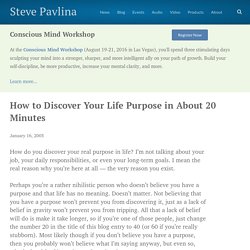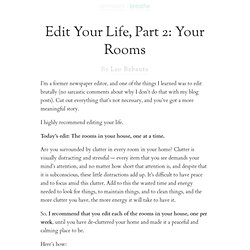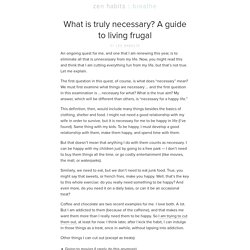

How to Discover Your Life Purpose in About 20 Minutes. How do you discover your real purpose in life?

I’m not talking about your job, your daily responsibilities, or even your long-term goals. I mean the real reason why you’re here at all — the very reason you exist. Perhaps you’re a rather nihilistic person who doesn’t believe you have a purpose and that life has no meaning. Doesn’t matter. Not believing that you have a purpose won’t prevent you from discovering it, just as a lack of belief in gravity won’t prevent you from tripping. Here’s a story about Bruce Lee which sets the stage for this little exercise. If you want to discover your true purpose in life, you must first empty your mind of all the false purposes you’ve been taught (including the idea that you may have no purpose at all). So how to discover your purpose in life? Here’s what to do: Take out a blank sheet of paper or open up a word processor where you can type (I prefer the latter because it’s faster).Write at the top, “What is my true purpose in life?”
» Zen Mind: How to Declutter. By Leo Babauta One of the things that gives me most peace is have a clean, simple home.

When I wake up in the morning and walk out into a living room that has been decluttered, that has a minimalist look, and there isn’t junk lying around, there is a calm and joy that enters my heart. When, on the other hand, I walk out into a living room cluttered with toys and books and extra things all over the place, it is chaos and my mind is frenetic. I’ve been a simplifier and a declutterer for years now (probably 8-9 years) and I’ve gotten pretty good at it, but I’ve found that you have to keep coming back to revisit your clutter every once in awhile. Here are my top decluttering tips: Do it in small chunks. » Edit Your Life, Part 2: Your Rooms. By Leo Babauta.

» What is truly necessary? A guide to living frugal. By Leo Babauta An ongoing quest for me, and one that I am renewing this year, is to eliminate all that is unnecessary from my life.

Now, you might read this and think that I am cutting everything fun from my life, but that’s not true. Let me explain. The first question in this quest, of course, is what does “necessary” mean? We must first examine what things are necessary … and the first question in this examination is … necessary for what? This definition, then, would include many things besides the basics of clothing, shelter and food.
But that doesn’t mean that anything I do with them counts as necessary. Similarly, we need to eat, but we don’t need to eat junk food. Coffee and chocolate are two recent examples for me. 2008: my year of living smaller. (Warning: non technical jottings ahead!)

I tried a little experiment in 2008: living smaller. I caught public transport only. I got rid of extra lightbulbs. I baked my own bread. I froze my own dumplings. When my kettle broke, I didn't replace it: I use a pot. I worked less, and earned way less, and spent more time writing and thinking. At various times I let my mobile phone lapse too, and toyed with the idea of getting the power cut off: a fantasy involving those camper lights with solar power and a gas burner for small meals evolved and the climate in Sydney is such that you can get away with no heating or cooling if your abode is insulated, at a pinch.
This leads to a very placid lifestyle: I don't think I have ever been less engaged with the rat race, and at the same time, less restless (outside office hours.) 2008 was a good year for my friends: no leap forwards, just the removal of long-standing shackles that moved me to tears of joy on more than one ocassion. Life does not have to be perfect. Live Simple: Radical tactics to reduce the complexity, costs, an. Weird Wired Science. Austrian physician Franz Joseph Gall sought to understand the mind of murderers and other criminals by feeling the outside of their skulls. This practice, which he first used in 1796, later came to be called Now largely discredited, it turned out that neither Gall nor anyone could systematically link the bumps and lumps on the head to any regular patterns of behavior, criminal or otherwise.
Psychologists no longer need to use scalp massages as diagnostic tools. They can now look at what's happening inside the skull using one of several types of brain scans. The most successful of these methods is the magnetic resonance imaging (MRI) brain scan, particularly the functional MRI (or fMRI). Patients are placed within a scanning device that causes nuclei within the cells to produce a rotating magnetic field detected by the scanner.
Brain scans are clearly an advance over phrenology, but they also have their limitations. The "wow" factor is only part of the story.